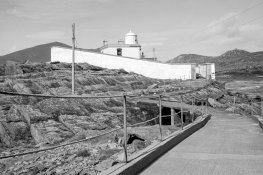Stephen, thanks for your replies. The lightbox certainly seems to have a reasonably good spread of light, with only a small amount of drop off. 3/10's of a stop, whilst it would be noticeable with some images, certainly is not a real issue as long as you know it is there. I would therefore assume that the sweet spot where minimal difference would be, would be an A5 central portion of the lightbox. This would mean that you should have extremely even light over 4x5', 5x7' and full plate film. 8x10' film could be a stretch on the 210mm side, but not the 310mm side. For the benefit of the USA people, A4 is 297mm x 210mm.
With regards to A4, I fully knew you were in Ireland, what with your accent for starters.

No I was thinking out loud that an A4 sized platten is perfect for pretty much the entire world, except for maybe the USA market, Canada may also be slightly affected but by and large I think they are metric.
With regard to emulsion to emulsion; or in this case, to your electronic sensor. It may not seem to be much of an issue, or maybe no issue at all, but compound generations of photocopying do start to add up. I would suggest it is probably only noticeable under magnification for one generation, but subsequent generations would probably show some deficiencies in general appearing. In another life we would use duplicating film and always emulsion to emulsion in a vacuum frame. Or if photocopying a negative or transparency, it was usually imperative that you did emulsion to emulsion. With electronic imagery and software available these days, it may no longer be that much of an issue. Your flipped sample is appreciated, but only you can detect if there has been a gain over the original which was through the back door; probably not worth pursuing as I'm sure you have a myriad of other more important photographic things you wish to do.
With regard to flare, I'm assuming that the lens you have used is excellent to outstanding, such is the level of consumer product available these days. That said, having black paper surrounding the film on the lightbox would also help your eyes if you were working for hours at a time duplicating/copying. I know this as I have done that kind of work for hours at a time, the eyes and brain do get fatigued when confronted by a light source quite a few stops brighter than surrounding ambient.
Matt brings up an interesting point, I hadn't thought about the, the discontinuous nature of LED technology.
Mick.






 No I was thinking out loud that an A4 sized platten is perfect for pretty much the entire world, except for maybe the USA market, Canada may also be slightly affected but by and large I think they are metric.
No I was thinking out loud that an A4 sized platten is perfect for pretty much the entire world, except for maybe the USA market, Canada may also be slightly affected but by and large I think they are metric.